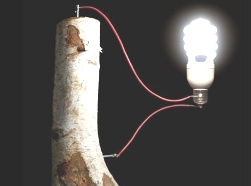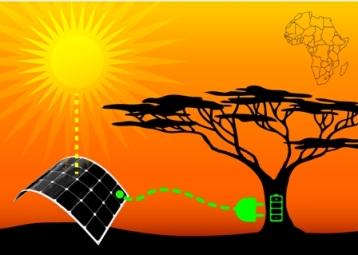Categories: Featured Articles » Interesting electrical news
Number of views: 11803
Comments on the article: 1
Wood waste battery
 With the development of technologies for the production of low-cost electricity based on solar panels, as well as taking into account significant investment in wind energy, there is a need for a more convenient and technologically intelligent way of storing the received energy. Research results from Linkoping University in Sweden, published in Science, have shown that biological waste paper production can help create affordable, environmentally friendly material for a new type of battery cathode.
With the development of technologies for the production of low-cost electricity based on solar panels, as well as taking into account significant investment in wind energy, there is a need for a more convenient and technologically intelligent way of storing the received energy. Research results from Linkoping University in Sweden, published in Science, have shown that biological waste paper production can help create affordable, environmentally friendly material for a new type of battery cathode.
Inexpensive organic solar cells based on conductive plastic have achieved very high performance, and alternative energy, obtained in this way on an industrial scale, has now become much cheaper, there is competition justified by progress.
Traditionally, metal oxides carry charge in batteries. Commonly used materials, such as, for example, cobalt, are a limited and expensive resource, for this reason, scientists decided to look for renewable material, the receipt of which will not entail large material costs.
Olle Inganas, a professor of organic and biomolecular electronics, from Linkoping University, a leading author of the publication in Science, notes that nature has solved this problem a long time ago.

The scientist was inspired by the process of photosynthesis, where electrons charged by solar energy are transported by quinones - electrochemically active molecules based on benzene rings consisting of six carbon atoms. Inganas isolated brown liquid from raw materials, which is a common waste in the production of pulp. This liquid consists mainly of lignin, a biopolymer that forms the walls of plant cells.
To use quinones as charge carriers in batteries, Inganas, together with his Polish counterpart Grzegorz Milczarek from the Poznan Polytechnic University in Poland, developed the thinnest film of a mixture of lignin and pyrrole, which are part of a brown liquid. A film of half a micron thick became the cathode of the battery.

The goal of the researchers is to propose a method of storing electricity from renewable sources that would not require the construction of large networks.
Since in some countries significant investments have been made in wind energy, and organic solar cells have reached critical low cost, the development of new environmentally friendly and inexpensive batteries is very important.
After a group of researchers from UCLA reported achieving 10% efficiency in converting sunlight energy, Olle Inganas, who had been researching organic solar cells for many years, decided that the efficiency of such batteries was enough to start large-scale production.

Now scientists are faced with further research on more efficient energy storage based on renewable materials. Lignin accounts for about 30% of woody biomass, so the source is fully renewable and inexhaustible. The first steps to create a full battery based on wood waste have already been taken. And at the moment, research is underway to optimize the battery.
See also at bgv.electricianexp.com
:
